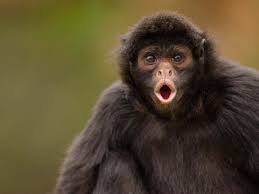Se-tenant: UPAEP 2024 : The Environment - Whales (El Salvador 2024)
UPAEP 2024 : The Environment - Whales (El Salvador 2024)
01 January (El Salvador ) within release UPAEP 2024 : The Environment goes into circulation Se-tenant UPAEP 2024 : The Environment - Whales face value 4*1 United States dollar
| Se-tenant UPAEP 2024 : The Environment - Whales in catalogues | |
|---|---|
| Colnect codes: | Col: SV 2024.00.00-02 |
Se-tenant is square format.
Also in the issue UPAEP 2024 : The Environment:
- Se-tenant - UPAEP 2024 : The Environment - Whales face value 4*1;
- Stamp - UPAEP 2024 : The Environment - Whales face value 1;
- Stamp - UPAEP 2024 : The Environment - Whales face value 1;
- Stamp - UPAEP 2024 : The Environment - Whales face value 1;
- Stamp - UPAEP 2024 : The Environment - Whales face value 1;
Se-tenant UPAEP 2024 : The Environment - Whales it reflects the thematic directions:
Animals are multicellular, eukaryotic organisms of the kingdom Animalia (also called Metazoa). All animals are motile, meaning they can move spontaneously and independently, at some point in their lives. Their body plan eventually becomes fixed as they develop, although some undergo a process of metamorphosis later on in their lives. All animals are heterotrophs: they must ingest other organisms or their products for sustenance.
Birds (Aves), a subgroup of Reptiles, are the last living examples of Dinosaurs. They are a group of endothermic vertebrates, characterised by feathers, toothless beaked jaws, the laying of hard-shelled eggs, a high metabolic rate, a four-chambered heart, and a strong yet lightweight skeleton. Birds live worldwide and range in size from the 5 cm (2 in) bee hummingbird to the 2.75 m (9 ft) ostrich. They rank as the class of tetrapods with the most living species, at approximately ten thousand, with more than half of these being passerines, sometimes known as perching birds. Birds are the closest living relatives of crocodilians.
Monkey is a common name that may refer to most mammals of the infraorder Simiiformes, also known as simians. Traditionally, all animals in the group now known as simians are counted as monkeys except the apes. Thus monkeys, in that sense, constitute an incomplete paraphyletic grouping; however, in the broader sense based on cladistics, apes (Hominoidea) are also included, making the terms monkeys and simians synonyms in regard to their scope.
Turtles are reptiles of the order Testudines, characterized by a special shell developed mainly from their ribs. Modern turtles are divided into two major groups, the Pleurodira (side necked turtles) and Cryptodira (hidden necked turtles), which differ in the way the head retracts. There are 360 living and recently extinct species of turtles, including land-dwelling tortoises and freshwater terrapins. They are found on most continents, some islands and, in the case of sea turtles, much of the ocean. Like other amniotes (reptiles, birds, and mammals) they breathe air and do not lay eggs underwater, although many species live in or around water.




